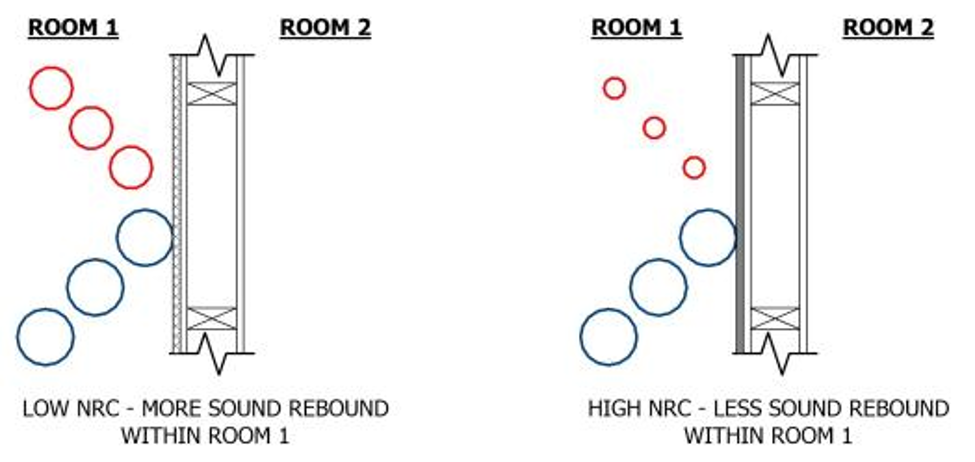What Does The NRC Rating Of An Acoustic Panel Mean?
 As you compare options for acoustic panels to address the noise challenges in your commercial space, office remodeling or home improvement project, one of the most important numbers to know is the NRC rating.
As you compare options for acoustic panels to address the noise challenges in your commercial space, office remodeling or home improvement project, one of the most important numbers to know is the NRC rating.
The Noise Reduction Coefficient—aka NRC—is a representation of the decay rate of sound, or how much sound is absorbed by an object or surface, compared to that rate in a standard reverberant room without the object or surface in it. While most often applied to specific materials, such as panels, designed to improve the acoustics of a space, every material can be given an NRC rating, which ranges from 0 to 1.0.
NRC Comparison of Common Surface Materials
| Surface Material | NRC Rating |
| Marble | 0.0 |
| Drywall | 0.15 |
| Foam acoustic panel | 0.4 |
| Acoustic Design Works 1″ acoustic panel | 0.85 |
| Acoustic Design Works 2″ acoustic panel | 1.0 |
Marble, for example, has an NRC of 0, meaning it completely reflects back the sound waves that strike it. But 2-inch acoustic panels from Acoustic Design Works, with a fiberglass core and sound transparent fabric covering, have an NRC rating of 1.0, meaning they absorb all of the sound waves that strike them, and when used to cover at least 15-20 percent of a room’s wall space can significantly reduce echo, ambient noise and unwanted reverberation within a space.
Most materials will fall somewhere in between, with the NRC indicating the percentage of sound being absorbed. Our 1-inch acoustic panels, for example, have an NRC rating of 0.85, so while they don’t absorb as much as their 2-inch counterparts, they still absorb 85 percent of the sound striking them, a considerable improvement over the 0.15 NRC of drywall.
In comparison, 1-inch foam acoustic panels may have an NRC of only 0.4 on average, so they are still reflecting back as much as 60 percent of the sound waves.
What that means for your sound quality solution is that while foam panels may be less expensive, you are sacrificing quality and may need to use more panels to achieve the same noise-reduction results you are seeking. How many panels are needed to adequately reduce echo and reverberation in your space will depend on the size of your space, its use, and other materials in the room (including flooring, furniture, wall coverings, and more).
To determine how many panels you should expect to use in your space, use our calculator for a simple recommendation based on your room size and ceiling height. If your project has more complex needs, such as reducing noise in an open-concept office setting or utilizing suspended panels in a space with especially high ceilings, contact us for a more customized recommendation and quote.
